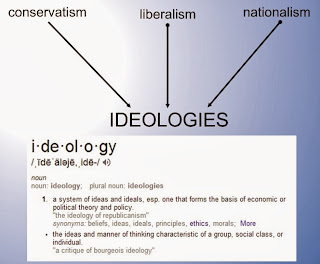Guest Post: Inspired by the Favorite Poem Project
By Kate Crosby
Kiera chose Billy Collins' "The Parade."
I'd say they found the switch.
"Poetry connects us with our deep roots, our evolution as an animal that created rhythmic language as a means of transmitting vital information across the generations. We need to communicate not only with our peers but our ancestors and descendants, and the arts of poetry, writing, print, and digital media serve that communication.”
—Robert Pinsky
I first learned
about The Favorite Poem Project (http://www.favoritepoem.org) at the
2013 NCTE Conference in Boston. Sitting in the back of a very crowded
conference room, I listened to Robert Pinsky speak of poetry as a uniquely intimate art form.
He emphasized the importance of participation. A poem does not live on
the page. It lives in the body, through the voices that give it breath
and sound. As his words
reached across the wide space, insisting on engagement, I was reminded
of Billy Collins’ “Introduction to Poetry.” In this poem, a speaker
laments his students’ inclination to beat meaning from a poem, to “tie
the poem to a chair with rope / and torture a
confession out of it.” He encourages a more visceral response, telling
his students to “press an ear against its hive,” to “walk inside the
poem’s room / and feel the walls for a light switch.”
Recently I had been groping for such a switch. I longed to
make the study of poetry less of an
academic exercise and more of an authentic experience.
I wanted students to understand the poems that moved them, and I wanted them
to understand why they were moved. I wanted them to equate analysis, not with dissection, but with illumination and life. As I watched the 5-minute videos on the Favorite Poem Project website, I
realized I had found that switch. My students would create videos, like these, that conveyed a chosen poem's importance to them. I knew the project would require a shift in my approach to teaching poetry - I would have to employ tools beyond the text and page - but perhaps that shift was not unlike the one I was asking my students to make. Together, we would reenter the world of poetry with fresh eyes.
Step 1: Getting Familiar with Tech Tools
I
began by consulting my tech-saavy colleagues like Kerry for advice on
how to facilitate this project with students in my Grade 12 class. I saw how digital technology could enhance
students’ expression, and I needed some direction when it came to
choosing the right tools. I did not want the emphasis on technology to
detract from the project’s goal of authentic and intimate interaction
with a poem. I wanted the technology be the tool,
not the focus.
We
determined that the project could be done using iMovie, and we spent
several days watching tutorials and getting acquainted with the program.
Students worked together, filming short video clips
with iPads and iPhones and importing them into iMovie, familiarizing
themselves with its editing features. Once we had a handle on the
software, we turned our attention to choosing poems.
Step 2: The Assignment
For
one full week, students immersed themselves in poetry. I told them to
read, read, read without preconception and without agenda. They returned
to the works of poets they had read before, and
they explored new ones. They rediscovered Ozymandias. They found
Prufrock. They began each class by sharing phrases and lines and images
that impacted them.
“And indeed there will be timeThey handwrote lines they liked. They committed them to memory. I saw them pressing their ears to the hive. I watched them run their fingers along passages, searching for a switch.
To wonder “Do I dare?” and, “Do I dare?”
Step 3: The Writing Response and the Storyboard
Once
students chose their poems, they wrote a 400-600 word response about
why the poem resonated with them. This was a chance to reflect upon the poem's significance and articulate why it mattered. The reflection would inform the choices they made in the video - choices that involved the inclusion of sound, visual imagery, narration and sequence of clips. From here, students plotted the
video’s narrative on a storyboard. This storyboard became a rough
template for the direction of the video; however they were free to revise as reroute as their videos came to
life, as they began to take their own serendipitous shapes.
Step 4: Publication
Students
published their videos on YouTube and shared them with the class. I was
overwhelmed by their candor and by the quality of the final product.
With the students’ permission, I have included
two of the many worthy submissions.
Julia
chose e.e. cummings’ “[i carry your heart with me (i carry it in]”
Kiera chose Billy Collins' "The Parade."
I'd say they found the switch.



.jpg)
Comments
Post a Comment